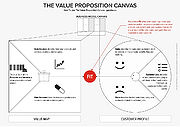Belbin's Team Roles
Developed by André Agertoft Condamine
Contents |
Abstract
When dealing with Project Human resource management it is essential for a project manager to develop suitable project team. This process requires focus on not only developing the overall competencies of a team, but also team interaction and environment to enhance project performance. To cope with this, it is essential that a project team consist of diverse members that can carry out different team roles to boost synergetic performance. For this, Dr. Meredith Belbin studied the importance of team role for many years at Henley University. Here, Belbin developed different team roles based on nine years of empiric study of team analysis, games etc. The study resulted in the discovery of 9 different team roles. It turned out to be possible to describe the inner psychological dynamics of the person, and to describe what effects this would have, partly on the employees and partly on a team. Additionally, the study also showed that it could be predicted how a team will manage from the composition of the team. Belbin’s work led to a widely used set of tools, which can be used to analyse and diagnose project teams for further performance enhancement.
History
In 1969, Dr. Meredith Belbin was asked to investigate team performance alongside Roger Mottram, Bill Harston, and others. For this, Dr. Belbin and his colleagues decided for a business game as a framework to study the performance of teams. Here, the business game would produce tangible financial results, which could be used to measure performance and differentiate between successful teams and failing teams. While now having covered the output of a team, Dr. Belbin aimed at measuring the input in terms of individual team-member characteristics. Therefore, Dr. Belbin assembled a psychometric test battery consisting of a measure of reasoning ability, personality, and outlook. For this, the Critical Thinking Appraisal (CTA), 16 scales of the Cattell personality inventory, and the Personal Preference Questionaire was used. After three years of studies, a tendency of the more successful teams was discovered to be higher scores of on mental abilities as measured by the CTA and to have a particular set of personality characteristics. By use of these tools Dr. Belbin and his colleagues found the successful team member to have the traits of being practical, down to earth, disciplined, orderly and trusted [REF]. However, as team performance not solely rely on some specific traits, Dr. Belbin started to focus on the performance of teams which was assembled in different combinations regarding the profile generated from the previous tools. This led to the conclusion that people who scored high in all the tests had a habit of competing to an extend that would suppress team performance [REF]. From here, Dr. Belbin identified the essential types of contributions that gives balance to a team and enhanced performance. To give an indication of the different types of contributions a person can have, Dr. Belbin and his team created 8 ‘Team roles’ that were noticeable by particular patterns of psychometric scores in the different tests [REF]. Additionally, a ninth role “the specialist” was added later after obtaining experience from theory in the industry [Ref].
Difference between team and group
What is a team role
Group Dynamics
The team roles can be position at a scale from being an extrovert to introvert and being stable to restless. Here, stable individuals are most often sociable and can mostly be accepted by others who experience them to be balanced individuals. However, they also tend to be experienced as careless, lazy and to rarely do their best unless they are under pressure [REF].
Restless individuals are often easy to influence. If restlessness is associated with high values of self-restraint and discipline, it will often be converted into energy. If there is little self-discipline, restlessness will often either have a disruptive effect on others or result in an unacceptably high degree of internal stress [REF]. Extroverted individuals are aware of the outer world of people and activities. They direct energy and attention outward, get energy by interacting with other people, and by acting [ref]. Introverted individuals are aware of their own inner world of ideas and experiences. They direct their energy and attention inward and get energy by reflecting on their thoughts [REF].
Belbin's Roles
| Belbin's Team Roles | Traits | Contribution | Allowable weakness | These needs to be | When dealing with, Do | When dealing with, Don't |
|---|---|---|---|---|---|---|
| Plant | Crative, imaginative, free thinking.
Generates ideas and solves difficult problems. |
Plants are the ideal idea generators. They may not be very practical or very good at communicating, however they excel at injecting new ideas into the team. Therefore, Dr. Belbin used the term “Plants” to categorise this team role as such individuals’ plants ideas into the group. However, it does not matter if the idea of a plant seems insane at the time but usually these ideas turns out to be valuable for the team. | Plants need to be intelligent, have a creative disposition and the ability to think laterally without any prompting on the part of others, or be afraid of taking a minority standpoint. | Ignores incidentals.
Too preoccupied to communicate effectively. |
Feed them with questions and problems.
Encourage them to develop their ideas. |
Expect them to conform.
Criticise ideas that have no immediate application. } |
